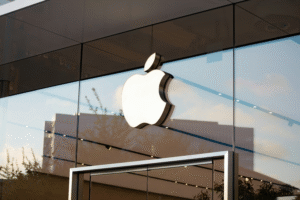
Smartphones are essential gadgets that we use daily for work, play, communication, and other purposes in today’s tech-savvy world. But not everyone has the money to spend on the newest, most expensive models. Thankfully, many great options strike a balance between price and usefulness in the budget smartphone market in 2024. However, how can you pick the most cost-effective smartphone for your needs? This post will walk you through the important things to think about.
Define Your Budget
Establishing a clear budget is essential before delving into the features and specs. To various people, the word “budget smartphone” can indicate different things. Budget smartphones in 2024 will usually cost between $100 and $400. Choose a price range that you are comfortable with, but remember that a little bit of extra money may buy you a phone with superior features and a longer lifespan. For those who prefer to shop online, one of the largest worldwide online retailers, Amazon, may have the greatest smartphones. To make your purchase even more affordable, you can take advantage of seasonal offers and promo codes for KSA provided by Barakatalan.com.
Set Your Needs First
Setting priorities helps you avoid compromising on features that are important to you when purchasing a budget smartphone. Here are some common features to consider:
- Performance: A phone with a strong processor and extra RAM is necessary if you’re a frequent multitasker.
- Camera Quality: A decent camera setup is a must for those who enjoy photography.
- Battery Life: If you’re constantly on the go, your top choice for a smartphone is one with a long-lasting battery.
- Display Quality: If you play video games or view a lot of videos, you should have a clear, bright display.
- Build Quality and Design: If you want a phone that feels and looks premium, durability and aesthetics can also be important considerations.
Operating System: Android vs iOS
While Android is the most popular operating system for low-cost smartphones, certain older or refurbished iPhone devices are also available at reasonable prices. This is a brief analogy:
- Android: Provides greater customization possibilities, a large app ecosystem, and a wide range of phones at various price points. Because Android is open-source, you can select from a variety of phones with unique features and user interfaces that are suited to particular requirements.
- Apple’s iOS: More streamlined and user-friendly, with frequent updates available even for older hardware. But since iPhones are typically more costly, you might need to consider used or older versions in order to keep costs down.
Processor and Performance
The processor, sometimes called the brains of the phone, is a major factor in deciding how well your smartphone will function. Even low-cost smartphones in 2024 will have reasonably powerful processors that can do the majority of tasks quickly. Observe the following:
- Qualcomm Snapdragon Series: Commonly seen in low-cost phones, the Snapdragon 600 or 700 series processors provide an excellent mix of efficiency and performance.
- MediaTek: With respectable performance at a cheaper price, the MediaTek Helio and Dimensity series have grown in popularity among low-cost smartphones.
- Apple’s A-Series: A less expensive iPhone will probably feature an A-series chip, which is capable despite being outdated.
It’s also important to consider RAM, which works in tandem with the processor to provide smooth multitasking. For simple work, you should aim for at least 4GB of RAM; for intensive usage, such as media editing or gaming, 6GB or more is preferred.
Display Quality
One of a smartphone’s most obvious features is its display. Phones with amazing displays are available even in the budget category. Here are some important things to think about:
- Screen Size: Much of this depends on personal taste. While smaller screens (around 6 inches) are more manageable and more compact, larger screens (6.5 inches and above) are ideal for media consumption.
- Resolution: Look for at least Full HD+ (1080p) resolution if you want a crisp display. If clarity and detail are less important to you, lower resolutions like HD+ (720p) may work just as well.
- Panel Type: AMOLED panels can be more expensive than LCD screens, but they provide deeper blacks and richer colors. IPS LCDs are widely seen in low-cost phones and offer respectable viewing angles and color accuracy.
Camera Quality
Cameras are an important selling point for smartphones, including affordable versions in 2024. Nowadays, a lot of low-cost phones have several camera configurations, such as macro, wide-angle, and depth sensors. Here are the points to consider:
- Megapixels: A higher number of megapixels might yield more detailed images, but they are not everything. For decent quality, look for a main camera with at least 12 MP.
- Aperture: More light entering the lens through a wider aperture (lower f-number) is essential for low-light photography. It is ideal to have an aperture of f/1.8 or less.
- Software: Post-processing and AI improvements can greatly raise the quality of your photos. Samsung, Xiaomi, and Google phones are among the best in this regard.
- Video Recording: If video is important to you, check the maximum resolution and frame rate. While some low-cost phones may offer 4K filming at 30 frames per second, the majority only record in 1080p.
Battery Life and Charging
For most people, battery life is an important consideration. Consider the following:
- Capacity: A higher amount of milliampere-hours (mAh) indicates a longer battery life. For heavy users, a battery with at least 4,000 mAh is optimal.
- Efficiency: Battery life is also influenced by the processor and display types. AMOLED panels and more power-efficient processors typically result in phones using less electricity.
- Charging Speed: Being able to quickly top off your battery with fast charging is a nice feature. Seek out phones with a minimum of 18W fast charging capability.
Storage Options
Another crucial factor to think about is internal storage, particularly if you want to keep a large number of programs, pictures, or movies on your smartphone. Here are some rules to follow:
- Base Storage: Most budget cell phones come with 64GB of internal storage, which is enough for basic usage. But if you’re not going to use a microSD card, 128GB or more is essential.
- Expandable Storage: You can increase your storage capacity by using the microSD card slots found on a lot of low-cost Android phones. This is a reasonably priced method of adding storage without switching to a more costly model.
- Cloud Storage: To save space on your phone, think about storing documents and photographs in the cloud using services like Dropbox, iCloud, or Google Drive.
Connectivity Features
Lastly, don’t ignore connectivity options to consider:
- 5G: Having a phone that is compatible with 5G networks guarantees higher internet speeds and future-proofs your device as 5G networks proliferate.
- Wi-Fi and Bluetooth: For improved connectivity and quicker data transfer, go for Wi-Fi 6 and Bluetooth 5.0 or higher.
- Dual SIM: A phone with dual SIM functionality is necessary if you need to handle two numbers (for example, professional and personal).
Conclusion
Finding the most affordable smartphone for 2024 requires finding a balance between your wants and your means. Whether it’s performance, camera quality, battery life, or design, you may select a device that offers great value without going over budget by concentrating on what matters most to you. Keep in mind that the ideal phone for you is the one that suits your needs precisely and doesn’t break the bank. Cheers to your shopping!











